Hidden Dangers in Your Home - How to Find Them
Every home is a sanctuary, a place where we seek comfort and safety. Yet, lurking beneath the surface are hidden dangers that can threaten our peace of mind and well-being. From the moment you step through the door, you might be unaware of the potential hazards that could affect you and your family. In this article, we’ll explore these dangers, how to identify them, and the steps you can take to create a safer living environment.
Imagine your home as a cozy fortress, but what if that fortress has cracks in its walls? These cracks can manifest as common household hazards that range from slips and falls to more serious issues like electrical faults. By understanding the most prevalent risks, you can take proactive measures to protect your loved ones. So, let’s dive deeper into the hidden dangers that might be lurking in your home.
Every day, we navigate our homes without giving much thought to the potential hazards around us. Did you know that slips and falls are among the leading causes of injuries in the home? It’s easy to overlook a wet floor or a cluttered hallway, but these seemingly minor issues can lead to serious accidents. Furthermore, electrical issues can arise from outdated wiring or improper use of appliances, leading to fires or even electrocution. Recognizing these dangers is the first step in ensuring your family’s safety.
Have you ever noticed a musty smell in your home? Poor indoor air quality can be a silent threat, leading to serious health issues over time. Common pollutants such as dust, pet dander, and volatile organic compounds (VOCs) can accumulate in your living space, affecting your respiratory health and overall well-being. To combat this, it’s essential to improve ventilation and air quality in your home. Simple actions like opening windows, using air purifiers, and regularly changing HVAC filters can make a significant difference.
Mold and mildew thrive in damp environments, often hidden from plain sight yet posing significant respiratory risks. If left unchecked, these fungi can lead to serious health complications. Identifying mold growth early is crucial. Look for discoloration on walls, musty odors, and signs of water damage. These indicators can help you take action before the problem escalates.
Recognizing the signs of mold growth early can prevent serious health issues. Here are some key indicators to watch for:
- Discoloration: Look for black, green, or white patches on walls or ceilings.
- Musty Odors: A persistent damp smell can indicate mold presence.
- Water Damage: Stains or peeling paint can be signals of moisture issues.
To maintain a safe atmosphere, implementing preventive measures is essential. Controlling humidity levels and ensuring proper ventilation can significantly reduce the risk of mold and mildew in your home. Here are a few tips:
- Use dehumidifiers in damp areas.
- Ensure bathrooms and kitchens are well-ventilated.
- Fix leaks promptly to prevent water accumulation.
Carbon monoxide is a silent killer that can seep into your home from faulty appliances, such as gas stoves or heaters. This colorless, odorless gas can cause serious health problems, including headaches, dizziness, and even death in severe cases. Installing carbon monoxide detectors in your home is a crucial step in preventing poisoning. Regularly checking and maintaining your appliances will also help keep your family safe.
Electrical hazards are another significant concern in many households. Faulty wiring can lead to devastating fires or electrocution. Understanding proper electrical safety measures is essential. For instance, if you notice flickering lights or warm outlets, these could be signs of faulty wiring that needs immediate attention. Don’t hesitate to call a professional electrician if you suspect an issue.
Identifying signs of faulty wiring can help you address issues before they escalate into dangerous situations. Here are some red flags to look out for:
- Flickering or dimming lights.
- Warm or discolored outlets.
- Frequent circuit breaker trips.
Using appliances safely and according to manufacturer guidelines can greatly reduce the risk of electrical fires and accidents in your home. Always ensure that cords are in good condition, avoid overloading outlets, and never run cords under rugs. These simple practices can go a long way in enhancing your home’s safety.
If you have young children, childproofing is essential. Your home should be a safe haven for your little ones to explore and play. Identifying common hazards, such as sharp objects and choking risks, is crucial in childproofing your home effectively. You wouldn’t want your child to stumble upon a sharp knife or small batteries, right?
Common hazards that can pose risks to children include:
- Sharp objects like knives and scissors.
- Small items that can be choking hazards.
- Hot surfaces and liquids.
Investing in safety equipment like outlet covers and cabinet locks can significantly reduce risks for children. These small yet effective tools can help create a safer environment for your little ones to explore without constant supervision. Remember, a little precaution goes a long way in ensuring their safety!
1. How can I improve indoor air quality?
To improve indoor air quality, ensure proper ventilation, use air purifiers, and regularly clean your home to reduce dust and allergens.
2. What are the signs of carbon monoxide poisoning?
Signs of carbon monoxide poisoning include headaches, dizziness, weakness, nausea, and confusion. If you suspect poisoning, evacuate immediately and call for help.
3. How often should I check my smoke and carbon monoxide detectors?
It's recommended to check your smoke and carbon monoxide detectors monthly and replace the batteries at least once a year.
4. What should I do if I find mold in my home?
If you find mold, it's essential to address the source of moisture, clean the affected area using appropriate cleaning solutions, and consider consulting a professional for extensive mold issues.
5. How can I childproof my home effectively?
To childproof your home, secure heavy furniture, use safety gates, cover electrical outlets, and store hazardous items out of reach.

Common Household Hazards
This article explores various hidden dangers lurking in homes, offering insights on identification and prevention to ensure a safer living environment for you and your loved ones.
Understanding the most prevalent hazards in homes can help you mitigate risks. From slips and falls to electrical issues, it's crucial to recognize these dangers to protect your family. Many households overlook these threats, thinking they only happen to others. But the truth is, these hazards can be as common as the air we breathe. For instance, did you know that more than 8 million people visit emergency rooms each year due to slip and fall injuries? That's a staggering number!
One of the most common household hazards is the accumulation of clutter. It may seem harmless, but clutter can obstruct pathways and lead to accidents. Think of it like a maze; the more obstacles you have, the harder it is to navigate safely. Additionally, consider your home's lighting. Poorly lit areas can increase the risk of tripping over furniture or other objects. Ensuring that your home is well-lit, especially in hallways and staircases, can significantly reduce these risks.
Another hidden danger lies in the kitchen. Cooking is a daily activity, but it also comes with its own set of hazards. Hot surfaces, sharp knives, and boiling liquids can turn a simple meal into a potential disaster. It's essential to maintain a clean and organized cooking space, ensuring that all tools and ingredients are within easy reach, reducing the chance of accidents.
Moreover, bathroom slips are another major concern. The combination of water and smooth surfaces can create a slippery environment, making falls more likely. To combat this, consider using non-slip mats and grab bars to provide additional support. These small changes can make a huge difference in preventing accidents.
Lastly, don't forget about toxic substances lurking in your home. Cleaning supplies, medications, and other chemicals can pose serious risks, especially to children and pets. It's vital to store these items out of reach and in secure cabinets. By taking these simple precautions, you can create a safer environment for everyone in your home.
- What are the most common household hazards?
The most common hazards include slips and falls, electrical issues, clutter, and toxic substances. Each of these can pose significant risks if not managed properly.
- How can I prevent slips and falls in my home?
To prevent slips and falls, ensure that your home is well-lit, keep walkways clear of clutter, and use non-slip mats in high-risk areas like the bathroom and kitchen.
- What should I do if I suspect mold in my home?
If you suspect mold, it's crucial to identify the source of moisture, clean the affected area, and improve ventilation to prevent future growth.

Indoor Air Quality
When we think about our homes, we often focus on the visible aspects—like the furniture, decor, and layout. However, one of the most critical elements of a healthy living environment is often overlooked: . Poor air quality can lead to a myriad of health issues, from allergies and asthma to more severe respiratory problems. It's essential to understand the common pollutants that may be lurking in your home and how to improve the air you breathe.
Indoor air quality can be affected by various factors, including volatile organic compounds (VOCs), dust, pet dander, and even mold spores. These pollutants can accumulate over time, especially in poorly ventilated spaces. For instance, did you know that indoor air can be up to five times more polluted than outdoor air? This shocking statistic emphasizes the need for homeowners to take action and ensure that their living spaces are safe and healthy.
To tackle the issue of poor indoor air quality, one effective strategy is improving ventilation. This can be as simple as opening windows to let fresh air circulate or using exhaust fans in areas like the kitchen and bathroom. Additionally, investing in an air purifier can help filter out harmful particles, providing a cleaner atmosphere for you and your family. Regularly changing air filters in your heating and cooling systems is another crucial step in maintaining good air quality.
One of the most significant contributors to poor indoor air quality is mold and mildew. These fungi thrive in damp environments and can pose serious respiratory risks if left unchecked. It's essential to stay vigilant and recognize the signs of mold growth early on, which can save you from extensive damage and health complications down the line. Look for discoloration on walls, musty odors, and any signs of water damage, as these are common indicators of mold presence.
Identifying mold growth is crucial for maintaining a healthy home. Here are some key signs to watch for:
- Discoloration: Look for dark spots on walls or ceilings.
- Musty Odors: A persistent, damp smell can indicate mold.
- Water Damage: Stains or bubbling paint can be a sign of moisture issues.
To keep mold and mildew at bay, implementing preventive measures is vital. Control humidity levels in your home by using dehumidifiers and ensuring proper ventilation in areas prone to moisture. Regularly check for leaks and fix them promptly, as even minor water issues can lead to significant mold growth if not addressed. Remember, a proactive approach today can save you from health hazards and costly repairs tomorrow!
Another hidden danger in your home is carbon monoxide (CO), a colorless, odorless gas that can be deadly. It is produced by burning fossil fuels, and faulty appliances can allow it to seep into your living space. Installing carbon monoxide detectors is crucial for early detection, as this silent killer can lead to severe health consequences. Make it a habit to check the batteries in your detectors regularly, and replace them every five years to ensure they function correctly.
By taking these steps to improve indoor air quality, you can create a safer and healthier environment for yourself and your loved ones. Remember, a little effort goes a long way in ensuring that the air you breathe is clean and free from harmful pollutants.
Here are some common questions related to indoor air quality:
- What are the common sources of indoor air pollution? Common sources include tobacco smoke, household cleaning products, mold, and pet dander.
- How can I improve the air quality in my home? Improve ventilation, use air purifiers, and regularly change air filters.
- What are the health effects of poor indoor air quality? Poor air quality can lead to respiratory issues, allergies, and long-term health problems.

Mold and Mildew
Mold and mildew are not just unsightly; they can be serious health hazards that lurk in the corners of our homes, waiting for the right conditions to thrive. These fungi love damp, warm environments, making bathrooms, basements, and kitchens prime real estate for their growth. If you've ever noticed a musty smell or seen dark spots on your walls, you might be dealing with a mold problem. But don’t worry! Understanding how to identify and tackle these nuisances can help keep your home safe and healthy.
One of the first steps in combating mold and mildew is to recognize where they commonly appear. They often flourish in areas with high humidity or where water has accumulated. For instance, if your bathroom lacks proper ventilation, it’s a perfect breeding ground for these fungi. Additionally, water leaks from roofs, pipes, or windows can create an environment where mold can grow undetected. Pay special attention to the following areas:
- Bathrooms, especially around showers and tubs
- Basements and crawl spaces
- Under sinks and around plumbing fixtures
- Behind wallpaper or paint
Once you’ve identified potential problem areas, it's essential to know the signs of mold growth. Look for discoloration on walls or ceilings, which can appear as black, green, or even white patches. A musty odor is another telltale sign that mold is present. If you notice any water damage, such as peeling paint or warped surfaces, it’s time to investigate further. Ignoring these signs can lead to more significant issues, including respiratory problems for you and your family.
To effectively deal with mold and mildew, you’ll need to take a proactive approach. Here are some preventive measures you can implement:
- Control Humidity: Keep indoor humidity levels below 60%. Use dehumidifiers in damp areas and ensure proper ventilation in bathrooms and kitchens.
- Fix Leaks: Address any plumbing or roof leaks promptly to prevent water accumulation.
- Use Mold-Resistant Products: When renovating, consider using mold-resistant paints and materials.
- Regular Cleaning: Clean and dry any damp or wet materials within 24 to 48 hours to prevent mold growth.
If you discover mold in your home, it’s crucial to act quickly. Small areas of mold can often be removed with soap and water or a mixture of vinegar and water. However, if the mold covers a large area (more than 10 square feet), it’s best to consult a professional. They can assess the situation and provide the necessary remediation to ensure your home is safe.
In conclusion, while mold and mildew can pose significant risks to your health, being informed and proactive can make a world of difference. By regularly checking for signs of mold, controlling humidity, and addressing water issues promptly, you can create a safer living environment for you and your loved ones.
Q: What are the health effects of mold exposure?
A: Mold exposure can lead to a variety of health issues, including respiratory problems, allergic reactions, and in some cases, more severe reactions in individuals with compromised immune systems.
Q: How can I tell if I have mold in my home?
A: Look for visible signs like discoloration on walls, musty odors, and water damage. If you suspect mold but can’t see it, consider using a mold test kit available at hardware stores.
Q: Can I remove mold myself?
A: Small areas of mold can often be cleaned with household products. However, if the infestation is extensive, it's advisable to seek professional help to ensure safe and thorough removal.
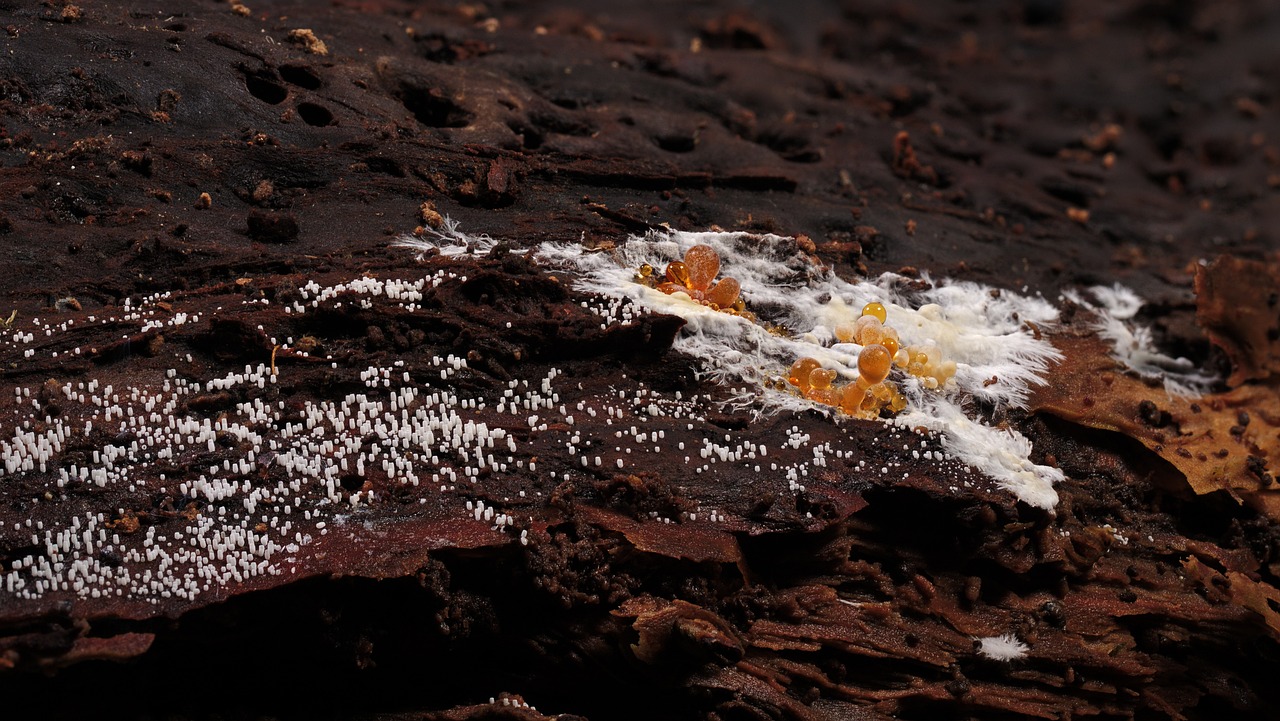
Signs of Mold Growth
This article explores various hidden dangers lurking in homes, offering insights on identification and prevention to ensure a safer living environment for you and your loved ones.
Understanding the most prevalent hazards in homes can help you mitigate risks. From slips and falls to electrical issues, it's crucial to recognize these dangers to protect your family.
Poor indoor air quality can lead to serious health issues. Learn about common pollutants and how to improve ventilation and air quality in your home for a healthier living space.
Mold and mildew thrive in damp environments, posing respiratory risks. Discover how to identify, remove, and prevent mold growth in your home to maintain a safe atmosphere.
Recognizing the signs of mold growth early can prevent serious health issues. Mold can often be a sneaky intruder, hiding in places you might not think to check. Here are some key indicators to watch out for:
- Discoloration on Walls or Ceilings: Look for black, green, or brown spots that may appear on surfaces, particularly in areas prone to moisture.
- Musty Odors: A persistent musty smell can indicate mold presence, even if you can't see it right away.
- Water Damage: If you've experienced leaks or water damage, check those areas closely, as they are prime spots for mold growth.
It's important to be vigilant. For example, if you notice a damp area in your bathroom or around windows, take it seriously. Mold can spread quickly, and what starts as a small patch can grow into a larger problem if not addressed. Beyond just the visible signs, consider your health: if you or your family members are experiencing unexplained respiratory issues, it might be worth investigating further.
Implementing preventive measures, such as controlling humidity and ensuring proper ventilation, can significantly reduce the risk of mold and mildew in your home.
Carbon monoxide is a silent killer that can seep from faulty appliances. Learn how to detect and prevent carbon monoxide poisoning to keep your family safe.
Electrical hazards can lead to fires or electrocution. Understanding proper electrical safety measures and recognizing faulty wiring can save lives and prevent disasters.
Identifying signs of faulty wiring, such as flickering lights or warm outlets, can help you address issues before they escalate into dangerous situations.
Using appliances safely and according to manufacturer guidelines can greatly reduce the risk of electrical fires and accidents in your home.
Childproofing is essential for families with young children. Discover effective strategies to eliminate potential dangers and create a safe environment for your little ones.
Identifying common hazards, such as sharp objects and choking risks, is crucial in childproofing your home effectively and ensuring your child's safety.
Investing in safety equipment like outlet covers and cabinet locks can significantly reduce risks for children, making your home a safer place for exploration and play.
Q: How can I tell if I have mold in my home?
A: Look for visible signs such as discoloration on walls, musty odors, and any history of water damage.
Q: What should I do if I find mold?
A: If the area is small, you can clean it with a mixture of water and detergent. For larger infestations, it may be best to consult a professional.
Q: How can I prevent mold from growing?
A: Keep humidity levels low, ensure proper ventilation, and address any leaks promptly to prevent mold growth.

Preventive Measures
When it comes to keeping your home free from the lurking dangers of mold and mildew, prevention is your best ally. The first step in this battle is to control the humidity levels in your home. Ideally, indoor humidity should be kept between 30% and 50%. You can achieve this by using dehumidifiers in damp areas like basements and bathrooms. Additionally, consider investing in a hygrometer to monitor the humidity levels accurately.
Another effective strategy is ensuring proper ventilation throughout your home. This means opening windows when weather permits, using exhaust fans in kitchens and bathrooms, and ensuring that your home’s HVAC system is in good working order. Proper airflow can dramatically reduce moisture accumulation, which is a breeding ground for mold. If you notice areas of your home that tend to stay damp, such as behind appliances or under sinks, be proactive in addressing these spots.
Regular inspections are also crucial. Make it a habit to check for leaks in plumbing, roof, and windows. A small drip can lead to a big problem if left unchecked. Moreover, cleaning gutters regularly will prevent water from pooling around your foundation, which can eventually seep into your home.
In addition to moisture control, it's essential to be vigilant about cleaning. Regularly clean and dry areas prone to mold growth, such as shower curtains, bathroom tiles, and under sinks. Use mold-inhibiting cleaning products to keep these areas safe. If you do find mold, act quickly; small patches can often be cleaned up with a mixture of water and detergent, but larger infestations may require professional help.
Lastly, consider using mold-resistant products in your home. For example, when renovating or painting, choose mold-resistant paints and materials, especially in areas with high humidity. This proactive approach can save you from the headache of dealing with mold in the future.
In summary, by controlling humidity, ensuring proper ventilation, performing regular inspections, maintaining cleanliness, and using mold-resistant products, you can significantly reduce the risk of mold and mildew in your home. Remember, a little prevention goes a long way in creating a safe and healthy living environment.
- What are the signs of mold in my home? Look for discoloration on walls, a musty odor, or visible mold growth in damp areas.
- How can I tell if my home has high humidity? Use a hygrometer to measure humidity levels; ideally, they should be between 30% and 50%.
- Is it safe to remove mold myself? Small patches can often be cleaned with soap and water, but larger infestations may require professional removal.
- What are the best products to prevent mold? Mold-resistant paints and cleaning products specifically designed to inhibit mold growth are effective choices.
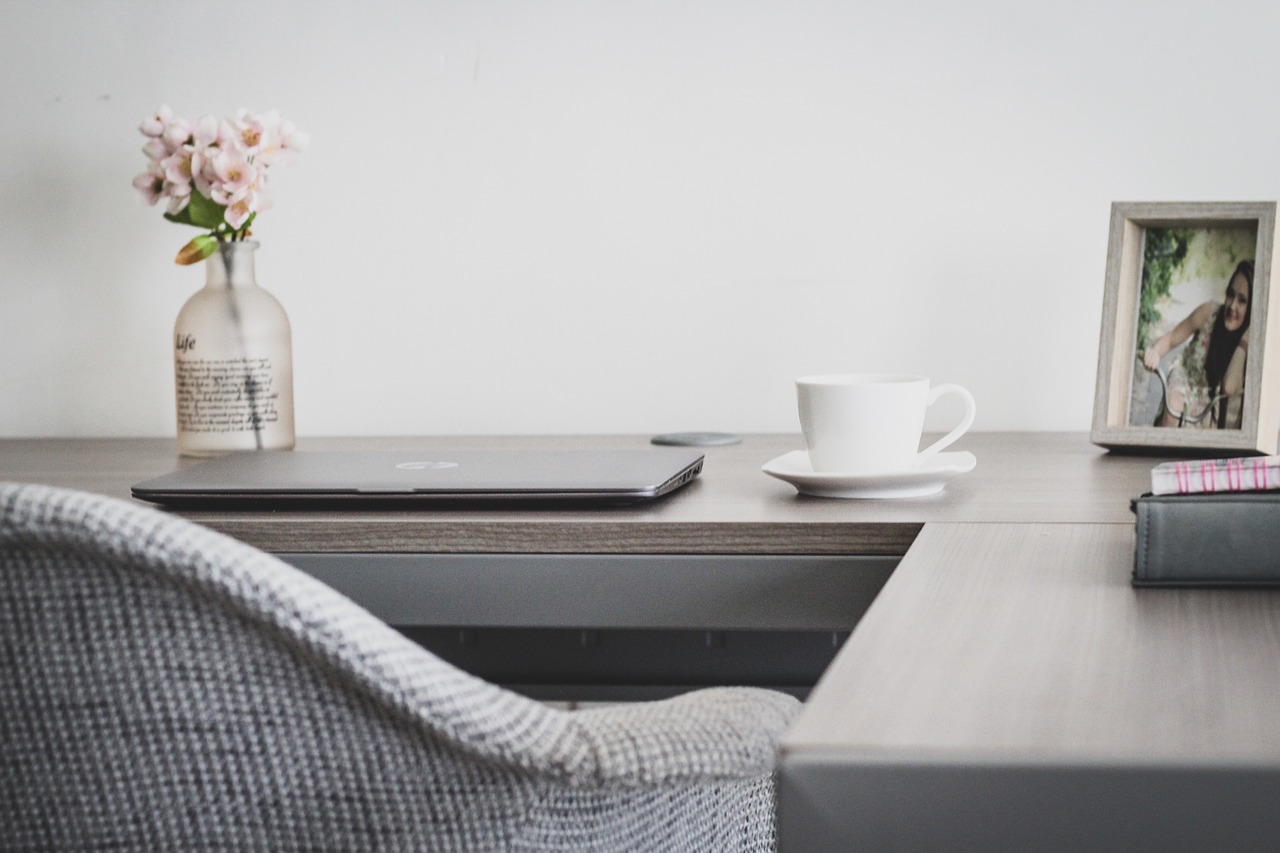
Carbon Monoxide Risks
When it comes to home safety, one of the most insidious threats is carbon monoxide (CO). Dubbed the "silent killer," carbon monoxide is a colorless, odorless gas that can seep into your home from various sources, often without you even realizing it. Imagine waking up to a beautiful morning, only to find that a hidden danger was lurking in your home all along. This is why understanding the risks associated with carbon monoxide is crucial for every household.
Carbon monoxide is produced by the incomplete combustion of fuels. Common sources include:
- Gasoline-powered engines
- Furnaces and boilers
- Gas stoves and ovens
- Fireplaces and wood stoves
- Charcoal grills
Any of these appliances can become a source of CO if they are not functioning properly or if they are used in enclosed spaces. For instance, running a car in an attached garage can lead to dangerous levels of carbon monoxide accumulating in your home. It's like leaving the door open for an uninvited guest; you might not see them, but they can still cause harm.
So, how can you protect yourself and your family from this invisible danger? First and foremost, installing a carbon monoxide detector is essential. These devices can alert you to dangerous levels of CO in your home, allowing you to take action before it's too late. It's recommended to place detectors on every level of your home, especially near sleeping areas. Regular maintenance of your fuel-burning appliances is also critical. Just like you wouldn't ignore a check engine light in your car, you shouldn't overlook the importance of keeping your home appliances in good working order.
Additionally, knowing the symptoms of carbon monoxide poisoning can be a lifesaver. Early signs often mimic common illnesses, making them easy to overlook. Symptoms include:
- Headaches
- Dizziness
- Shortness of breath
- Nausea or vomiting
- Confusion
If you or your family members experience these symptoms while at home, it’s vital to get fresh air immediately and call emergency services. Think of it as a fire alarm going off; your body is signaling that something is wrong, and it's crucial to listen.
In summary, carbon monoxide is a hidden danger that deserves your attention. By taking preventive measures, such as installing detectors, maintaining appliances, and being aware of the symptoms, you can create a safer living environment for yourself and your loved ones. Remember, vigilance is your best defense against this silent threat.
What should I do if my carbon monoxide detector goes off?
If your carbon monoxide detector sounds an alarm, evacuate your home immediately and seek fresh air. Call emergency services and do not re-enter your home until it has been deemed safe.
How often should I check my carbon monoxide detectors?
It's recommended to test your carbon monoxide detectors monthly and change the batteries at least once a year. Also, replace the entire unit every 5-7 years, depending on the manufacturer's instructions.
Can I use a gas stove or fireplace as a primary heat source?
Using gas appliances for heating can be dangerous if not properly vented. Always ensure that your appliances are installed and maintained according to local codes and manufacturer guidelines.
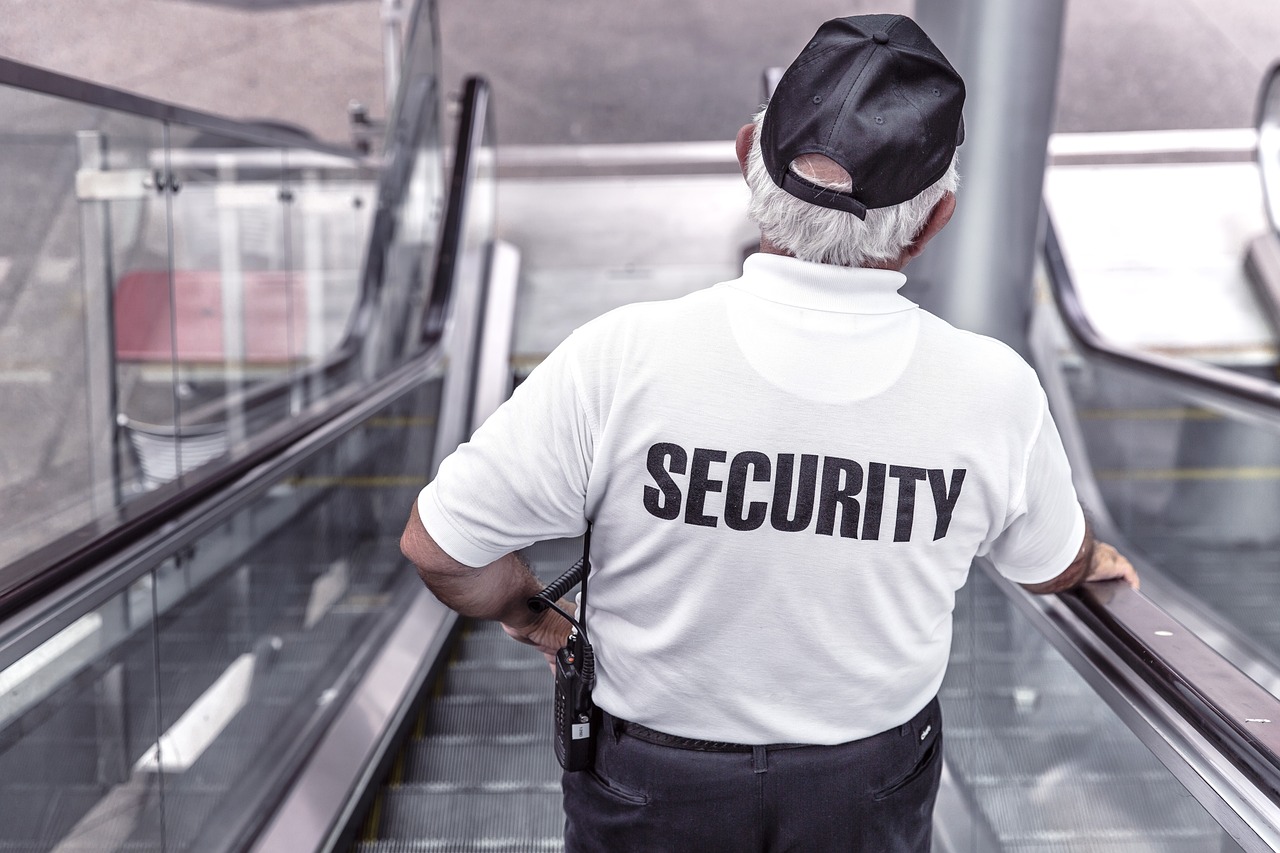
Electrical Safety
When it comes to ensuring the safety of your home, should be at the forefront of your mind. Electrical hazards are often invisible until it's too late, leading to devastating fires or even serious injuries. It's essential to understand the risks associated with electrical systems and take proactive measures to prevent accidents. Imagine your home as a well-oiled machine; if one part isn't functioning correctly, it can throw everything into chaos. Similarly, faulty wiring or unsafe practices can disrupt the safety of your living environment.
One of the most common issues homeowners face is faulty wiring. This can manifest in various ways, such as flickering lights, outlets that feel warm to the touch, or even strange odors coming from electrical devices. These signs should never be ignored. If you notice any of these problems, it's crucial to consult a licensed electrician to assess the situation. Remember, it's better to be safe than sorry. Just like a car that needs regular maintenance, your electrical system requires attention and care to function safely.
In addition to identifying faulty wiring, understanding the safe usage of appliances is vital. Each appliance comes with a manual that outlines how to use it safely. Ignoring these guidelines can lead to accidents. For instance, overloading outlets with too many devices can create a fire hazard. You should also avoid running cords under carpets or rugs, as this can lead to overheating. Think of electrical cords as highways; if too many cars (or devices) are on the road, traffic jams (or hazards) are bound to happen.
To further enhance your home's electrical safety, consider implementing the following practices:
- Regularly check your appliances for any signs of damage.
- Use surge protectors to safeguard your electronics from power surges.
- Install Ground Fault Circuit Interrupters (GFCIs) in areas where water and electricity may come in contact, such as kitchens and bathrooms.
Electrical safety isn't just about avoiding hazards; it's also about being prepared. Having a fire extinguisher specifically rated for electrical fires can be a lifesaver. Make sure everyone in your household knows where it is and how to use it. Think of it as an insurance policy—something you hope you never need but are grateful to have in case of an emergency.
In conclusion, prioritizing electrical safety in your home is not just about compliance with regulations; it's about protecting your family and your property. Regular inspections, safe usage practices, and preparedness can significantly reduce the risk of electrical hazards. Remember, safety starts with you. So, take a moment to evaluate your electrical systems and make necessary changes to ensure your home remains a safe haven for you and your loved ones.
Q: How often should I have my electrical system inspected?
A: It's recommended to have your electrical system inspected at least once every 3 to 5 years, or sooner if you notice any signs of trouble.
Q: What should I do if I experience a power outage?
A: First, check if the outage is affecting your entire neighborhood. If it is, contact your utility company. If it's only your home, check your circuit breaker for tripped switches.
Q: Are surge protectors really necessary?
A: Yes, surge protectors are essential for protecting your electronics from power surges, which can occur due to lightning strikes or other electrical issues.
Q: How can I tell if my wiring is outdated?
A: If your home is over 30 years old and has not had any upgrades, or if you notice frequent circuit breaker trips, it's time to consult an electrician for an evaluation.

Identifying Faulty Wiring
When it comes to ensuring the safety of your home, is paramount. Electrical issues can lead to devastating fires or even result in electrocution, making it essential to be vigilant. But how do you know if your wiring is up to par? Well, there are several telltale signs you can look for. For instance, if you notice flickering lights, this could indicate a problem with the wiring. It’s as if your lights are trying to communicate that something is wrong, and ignoring them could lead to bigger issues.
Another indicator is the presence of warm outlets. If you touch an outlet and it feels unusually warm, that’s a red flag waving right in front of you! This warmth can be a sign of overheating wires, which can lead to a fire if left unchecked. It’s kind of like when your car engine starts to overheat; you wouldn’t just ignore that, right? You’d want to pull over and investigate before it leads to a breakdown.
Moreover, if you experience frequent tripped circuit breakers or blown fuses, it’s time to take a closer look at your wiring. These occurrences can indicate that your electrical system is overloaded or that there’s a short circuit somewhere in the mix. Think of it as your home’s way of saying, “Help! I can’t handle this much power!” Ignoring these signs can put your home at risk.
Here are some additional signs to keep an eye out for:
- Burning smells: If you ever smell something burning near your outlets or switches, it’s crucial to act immediately.
- Discoloration: Look for any discoloration around outlets or switches, which can indicate overheating.
- Buzzing sounds: If you hear any strange buzzing or crackling noises, it’s time to call in a professional.
Now, you might be wondering, “What should I do if I identify these issues?” The first step is to turn off the power to the affected area to prevent any accidents. Next, it’s wise to consult a licensed electrician. They have the experience and tools necessary to diagnose and fix the problem safely. Remember, electrical work can be incredibly dangerous, so it’s best left to the professionals.
In conclusion, being proactive about identifying faulty wiring can save you from potential disasters. Just like you wouldn’t ignore a check engine light, don’t overlook the signs your home is giving you. Stay alert, stay safe, and ensure your electrical system is in good shape!
Q: What should I do if I suspect faulty wiring?
A: If you suspect faulty wiring, turn off the power to the affected area and contact a licensed electrician immediately.
Q: How often should I have my home’s electrical system inspected?
A: It’s recommended to have your electrical system inspected every 3 to 5 years, or sooner if you notice any issues.
Q: Can I fix electrical problems myself?
A: While some minor issues can be handled by homeowners, it’s best to consult a professional for any significant electrical problems to ensure safety.
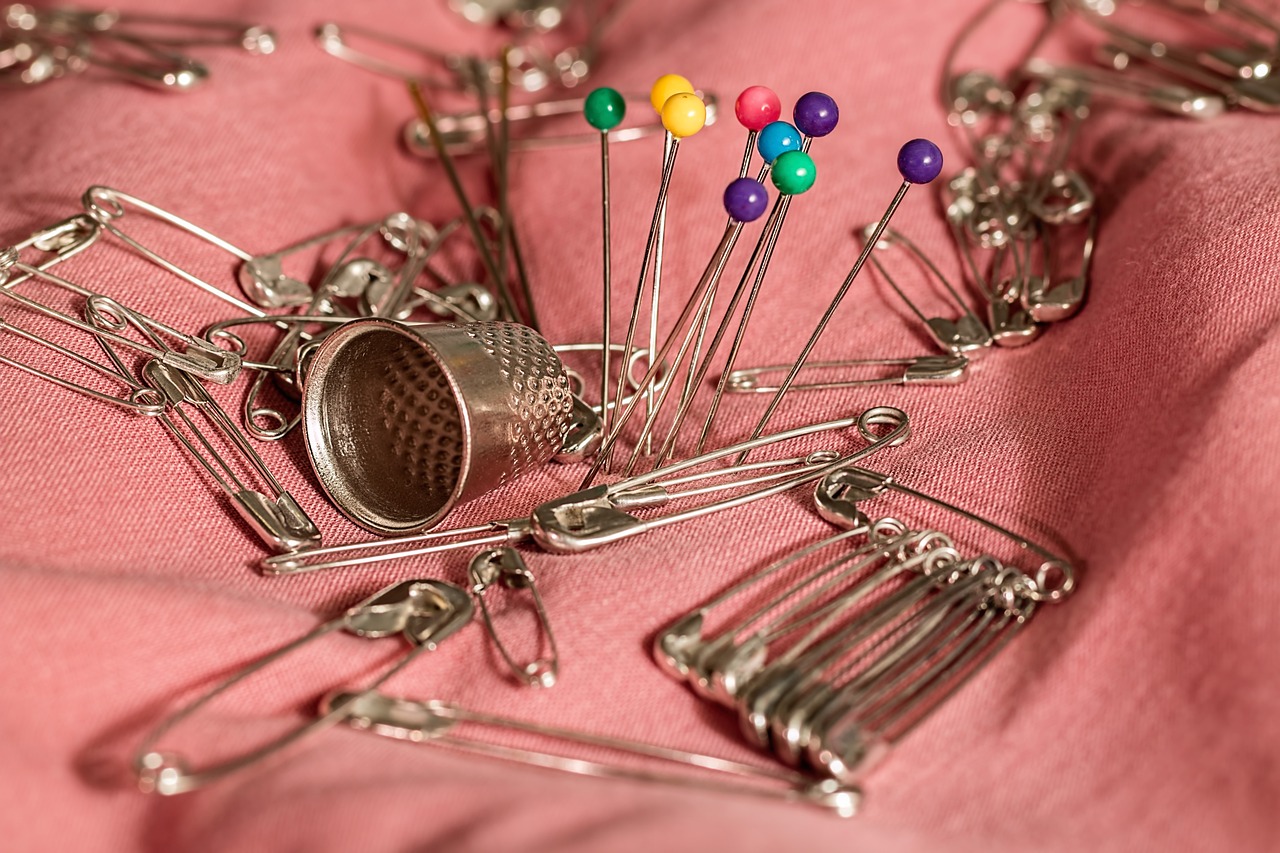
Safe Usage of Appliances
When it comes to keeping your home safe, understanding the is crucial. Every day, we rely on various devices to make our lives easier, but improper use can lead to accidents or even fires. Think of your appliances as friendly helpers—they're there to assist you, but only if you treat them right! Here are a few key points to keep in mind to ensure your appliances are working safely and effectively.
First and foremost, always read the manufacturer's instructions that come with your appliances. These manuals are packed with valuable information tailored specifically for the device you own. Ignoring them is like trying to navigate a new city without a map; you might get lost and encounter unexpected detours along the way. For example, did you know that some appliances require specific voltage levels? Using them incorrectly could lead to overheating or even electrical fires.
Next, regular maintenance is essential! Just as you wouldn't skip your car's oil change, your appliances need attention too. For instance, clean out your refrigerator coils to keep it running efficiently, and check your dryer vent for lint buildup. Neglecting these tasks can not only shorten the lifespan of your appliances but also pose safety risks. You might be surprised to learn that approximately 2,900 home fires are caused by clothes dryers each year, often due to lint accumulation. So, keep that in mind during your next cleaning spree!
Additionally, be mindful of how many appliances you plug into a single outlet. It's tempting to use power strips to accommodate all your gadgets, but overloading outlets is a recipe for disaster. Instead, consider using a surge protector designed for high-demand devices, especially for items like computers and televisions. These protectors can help prevent damage from power surges and reduce the risk of electrical fires.
Another crucial aspect is to ensure that your appliances are in good condition. Look for signs of wear and tear, such as frayed cords, rust, or unusual noises. If you notice any of these issues, it’s better to be safe than sorry—consider getting the appliance repaired or replaced. Remember, a small problem today could escalate into a major hazard tomorrow.
Lastly, always supervise your appliances while they're in use, especially those that generate heat, like toasters or irons. It might feel like a hassle to stand by, but think of it as a preventive measure. Just a moment of distraction can lead to a fire or other dangerous situations. If you need to step away, turn off the appliance first. Your safety is worth the extra effort!
In summary, safe appliance usage boils down to being informed, proactive, and attentive. By following these guidelines, you can enjoy the convenience of your devices without compromising your safety. Remember, a little caution goes a long way in preventing accidents and ensuring a secure home environment.
- What should I do if I notice a burning smell from an appliance?
If you detect a burning smell, immediately unplug the appliance and stop using it. It's best to have it inspected by a professional to avoid potential hazards. - How often should I clean my appliances?
Regular cleaning should be part of your routine—aim for at least once a month for most appliances, with deeper cleaning tasks scheduled seasonally. - Is it safe to use extension cords with heavy appliances?
It's generally not recommended to use extension cords with heavy appliances, as they can overheat and pose a fire risk. Always plug them directly into a wall outlet. - What are some signs that an appliance needs repair?
Look for unusual sounds, inconsistent performance, or visible damage like frayed cords. If something feels off, it’s best to consult a professional.
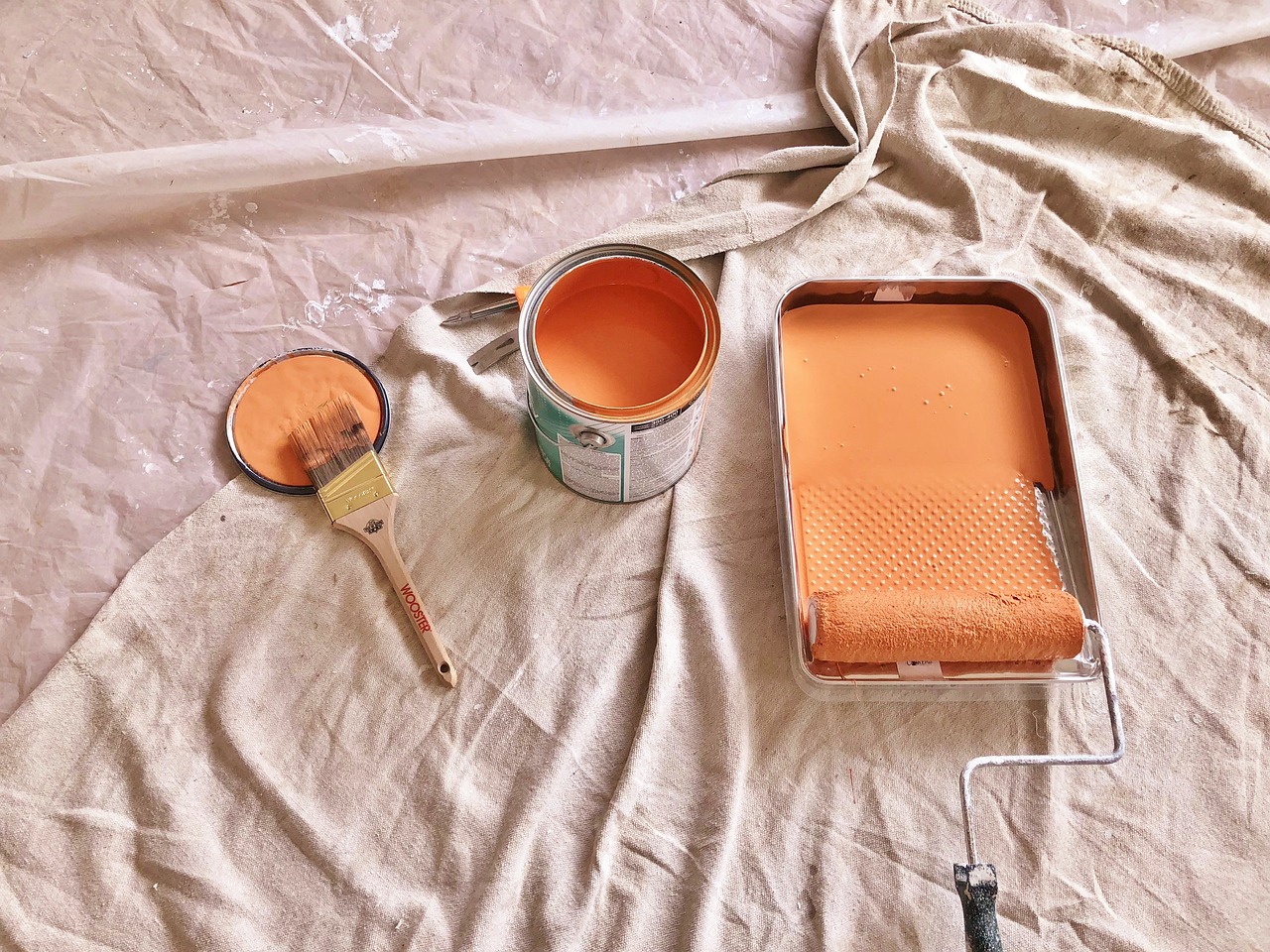
Childproofing Your Home
Childproofing your home is not just a precaution; it's a necessity for families with young children. The world can be a fascinating place for little explorers, but it’s also filled with potential hazards that can turn a fun day into a trip to the emergency room. So, how do you create a safe environment for your little ones without turning your home into a fortress? It’s all about being proactive and aware of the common dangers lurking in your everyday surroundings.
One of the first steps in childproofing is to identify common child hazards. These can include sharp objects, choking risks, and toxic substances. For instance, kitchen knives, scissors, and even small items like coins can pose serious threats. It’s crucial to keep these items out of reach or securely stored away. You might think that simply putting them on a high shelf is enough, but children are surprisingly resourceful! Consider using childproof locks on drawers and cabinets to keep curious hands at bay.
Another significant area to focus on is the living room, where many families spend a lot of time together. Furniture can be a hidden danger, especially items that can tip over. Always secure heavy furniture to the wall to prevent it from falling if your child decides to climb. Additionally, be mindful of electrical cords that can become trip hazards or potential strangulation risks. Using cord organizers or covering them with protective shields can help minimize these risks.
Investing in safety equipment is also a game-changer when it comes to childproofing your home. Here’s a quick overview of essential items you might want to consider:
- Outlet Covers: These are inexpensive and easy to install, providing a simple way to block access to electrical outlets.
- Cabinet Locks: Perfect for kitchens and bathrooms, these locks prevent children from accessing potentially dangerous items like cleaning supplies and sharp utensils.
- Corner Guards: Soft foam corner guards can be attached to sharp furniture edges to prevent injuries during playtime.
Furthermore, it’s essential to think about the outdoors as well. If you have a backyard, ensure that it is securely fenced and that any tools or chemicals are stored out of reach. Always supervise your children during outdoor playtime, and consider using safety gates to limit access to stairs or other hazardous areas.
Finally, remember that childproofing is an ongoing process. As your child grows and develops new skills, the hazards in your home may change. Regularly reassess your environment and make adjustments as needed to ensure that your home remains a safe haven for your little ones. By being vigilant and proactive, you can create a space where your children can explore, learn, and play without unnecessary risks.
Q: When should I start childproofing my home?
A: It’s best to begin childproofing before your baby starts crawling, as this is when they begin to explore their surroundings more actively.
Q: How often should I reassess my childproofing measures?
A: Regularly reassess your home every few months or whenever your child reaches a new developmental milestone.
Q: Are there any childproofing products that are essential?
A: Yes, outlet covers, cabinet locks, and corner guards are considered essential products for any childproofing plan.
Q: Can I childproof my home without spending a lot of money?
A: Absolutely! Many childproofing measures are inexpensive and can be done using items you already have at home.

Common Child Hazards
When it comes to childproofing your home, understanding is your first line of defense. Children are naturally curious, and their adventurous spirits can lead them into situations that pose serious risks. From the moment they start crawling to when they begin to explore their surroundings, it’s essential to be proactive in identifying potential dangers. Think of your home as a playground, but one that needs safety nets and soft landings to ensure that every tumble is just a part of the fun and not a trip to the emergency room.
One of the most prevalent hazards in homes is sharp objects. Items like knives, scissors, and even broken glass can easily injure a child who is not aware of their dangers. It's vital to store these items out of reach and in secure locations. For instance, kitchen drawers should have childproof locks, and scissors should be kept in a high cabinet. Additionally, consider the placement of furniture; sharp corners can be a source of injury during playtime. A simple solution is to use corner guards to cushion these edges.
Another significant risk comes from choking hazards. Small objects, such as coins, buttons, and even certain toys, can pose serious threats to young children. It’s a good practice to regularly check your living spaces for items that could be swallowed. You might even want to conduct a quick “choke test” by using a toilet paper roll; if an object can fit through the roll, it’s too small for a child. Remember, children have a knack for finding the tiniest items, so keep a vigilant eye on what’s lying around.
Moreover, consider the dangers associated with medications and cleaning supplies. These substances are often stored in cabinets that children can easily access. To mitigate this risk, use childproof locks on cabinets and ensure that all medications are stored in high, out-of-reach places. Additionally, be mindful of how you dispose of old medications; flushing them down the toilet or throwing them in the trash can lead to accidental ingestion. Always consider using a medication take-back program to safely dispose of unused or expired medication.
Lastly, let’s not forget about electrical outlets. They may seem innocuous, but they can be a gateway to serious accidents. Investing in outlet covers can help prevent little fingers from poking around where they shouldn’t. It’s also wise to ensure that cords from electronics are tucked away safely and not left dangling, as children may see these as toys and could potentially pull them down.
In summary, childproofing your home is an ongoing process that requires vigilance and a proactive approach. By identifying and addressing these common hazards, you can create a safer environment for your children to explore and grow. Remember, the goal is not to eliminate all risks but to minimize them so that your home can be a nurturing space where children can learn and play without unnecessary danger.
- What are the most common child hazards in the home? Common hazards include sharp objects, choking risks, medications, cleaning supplies, and electrical outlets.
- How can I childproof my home effectively? Regularly check for hazards, use childproof locks on cabinets, and invest in safety equipment like outlet covers and corner guards.
- At what age should I start childproofing? It's best to start childproofing as soon as your child starts to crawl, as they will begin to explore their environment.
- How often should I reassess my childproofing measures? Regularly reassess your childproofing measures, especially as your child grows and begins to reach new milestones.
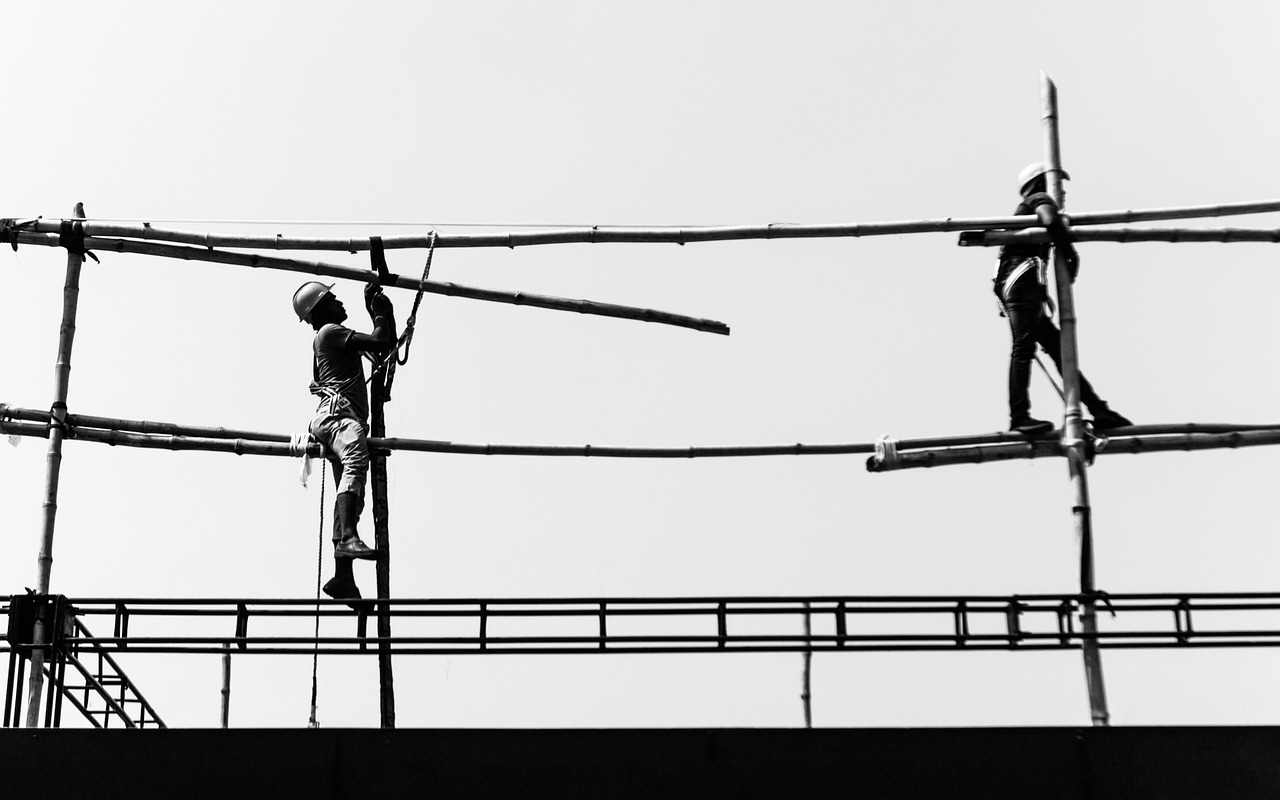
Safety Equipment
This article explores various hidden dangers lurking in homes, offering insights on identification and prevention to ensure a safer living environment for you and your loved ones.
Understanding the most prevalent hazards in homes can help you mitigate risks. From slips and falls to electrical issues, it's crucial to recognize these dangers to protect your family.
Poor indoor air quality can lead to serious health issues. Learn about common pollutants and how to improve ventilation and air quality in your home for a healthier living space.
Mold and mildew thrive in damp environments, posing respiratory risks. Discover how to identify, remove, and prevent mold growth in your home to maintain a safe atmosphere.
Recognizing the signs of mold growth early can prevent serious health issues. Look for discoloration, musty odors, and water damage as indicators of mold presence.
Implementing preventive measures, such as controlling humidity and ensuring proper ventilation, can significantly reduce the risk of mold and mildew in your home.
Carbon monoxide is a silent killer that can seep from faulty appliances. Learn how to detect and prevent carbon monoxide poisoning to keep your family safe.
Electrical hazards can lead to fires or electrocution. Understanding proper electrical safety measures and recognizing faulty wiring can save lives and prevent disasters.
Identifying signs of faulty wiring, such as flickering lights or warm outlets, can help you address issues before they escalate into dangerous situations.
Using appliances safely and according to manufacturer guidelines can greatly reduce the risk of electrical fires and accidents in your home.
Childproofing is essential for families with young children. Discover effective strategies to eliminate potential dangers and create a safe environment for your little ones.
Identifying common hazards, such as sharp objects and choking risks, is crucial in childproofing your home effectively and ensuring your child's safety.
When it comes to creating a safe haven for your children, investing in the right is non-negotiable. Think of your home as a fortress, and every piece of safety gear as a brick in that wall. From outlet covers to corner guards, these tools are designed to minimize risks and offer peace of mind. For instance, outlet covers can prevent curious little fingers from exploring dangerous electrical sockets, while cabinet locks keep harmful substances out of reach.
Moreover, consider the importance of baby gates. These can act as barriers to stairs or rooms that may pose risks, effectively keeping your little explorers within safe zones. Just imagine how a simple gate can transform a potentially hazardous area into a secure play zone!
Here are some essential safety equipment items you might want to consider:
- Outlet Covers: Essential for preventing electrical shocks.
- Cabinet Locks: Keep dangerous items like cleaning supplies out of reach.
- Corner Guards: Protect your child from sharp edges on furniture.
- Baby Gates: Block off stairs and hazardous areas.
- Non-slip Mats: Great for bathrooms and kitchens to prevent slips.
By incorporating these safety measures, you're not just protecting your children; you're also fostering an environment where they can learn and grow without the constant threat of injury. Remember, safety is not just about prevention; it's about creating a nurturing space where your kids can thrive.
Q: What is the best way to childproof my home?
A: Start by identifying potential hazards, such as sharp objects and toxic substances. Invest in safety equipment like outlet covers, cabinet locks, and baby gates to create a safer environment.
Q: How often should I check my safety equipment?
A: Regularly inspect your safety equipment to ensure it is functioning correctly. It's a good practice to check at least once every few months or after any significant changes in your household.
Q: Are there any specific safety measures for homes with pets?
A: Yes! Ensure that pet food and supplies are stored securely, and be mindful of any items that could be harmful if ingested. Also, consider pet gates to keep pets and children separated when necessary.
Frequently Asked Questions
- What are some common household hazards I should be aware of?
Common household hazards include slips and falls, electrical issues, and poor indoor air quality. Recognizing these dangers is the first step in protecting your family from potential accidents.
- How can I improve indoor air quality in my home?
Improving indoor air quality can be achieved by increasing ventilation, using air purifiers, and regularly checking for pollutants like mold and dust. Keeping your home well-ventilated helps ensure a healthier living environment.
- What are the signs of mold growth to look out for?
Signs of mold growth include discoloration on walls or ceilings, a musty odor, and visible water damage. If you notice any of these indicators, it's crucial to address them promptly to prevent health risks.
- How can I prevent carbon monoxide poisoning in my home?
To prevent carbon monoxide poisoning, ensure that all fuel-burning appliances are properly maintained and installed. Additionally, installing carbon monoxide detectors can provide an early warning of any issues.
- What should I do if I suspect faulty wiring?
If you suspect faulty wiring, look for signs like flickering lights or warm outlets. It's essential to consult a licensed electrician to address these issues before they escalate into dangerous situations.
- What are effective childproofing strategies for my home?
Effective childproofing strategies include securing sharp objects out of reach, using safety gates, and installing outlet covers. Creating a safe environment allows your little ones to explore without unnecessary risks.
- What safety equipment should I invest in for childproofing?
Investing in safety equipment like cabinet locks, corner guards, and outlet covers can significantly reduce risks for children. These tools help create a safer space for your kids to play and grow.



















